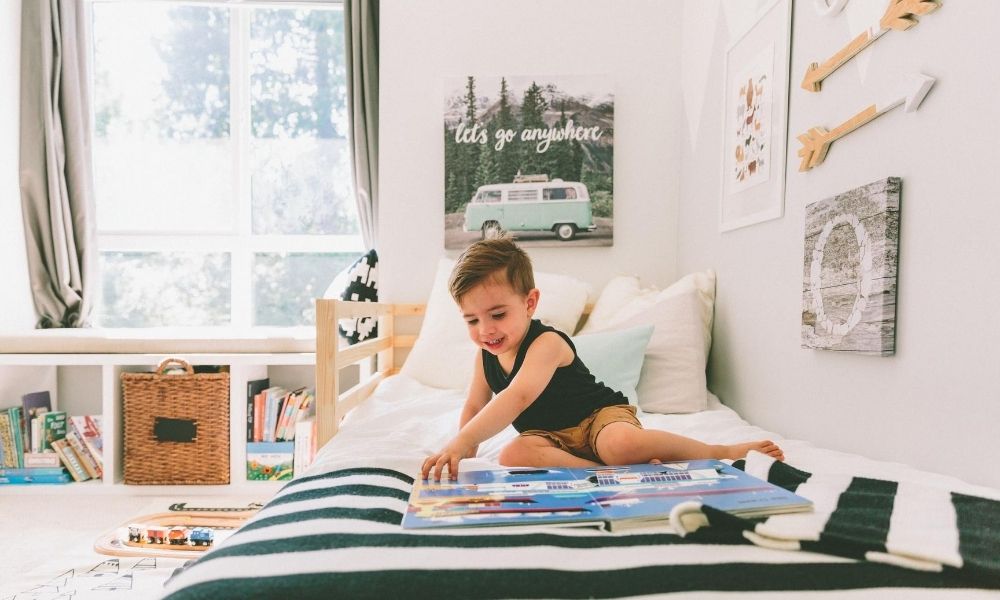The world is a busy place filled with sensations to be touched, tasted, heard, and smelled. For kids with sensory sensitivities, it’s an even busier place, bordering on chaotic. Having a space to decompress and relax after a long day is especially important for these kids, but sometimes children’s bedroom designs, with their kaleidoscopic colors and patterns, can have the opposite effect. Knowing how to design a sensory sensitive bedroom will give your kids the space they need to rest and recharge.
Color
In Mark Haddon’s The Curious Incident of the Dog in the Night-Time, the book’s protagonist—fifteen-year-old Christopher Boone, who is on the autism spectrum—decides if a day is going to be good or bad based on the colors of the cars he sees on the way to school. Three or four red cars mean it will be a good day, and four yellow cars mean it will be a bad day. Color affects everyone’s mood, but many kids with sensory issues—like Christopher—find certain colors especially soothing or distressing. You should take this into consideration when designing a sensory-sensitive bedroom. Find one or two colors your child prefers, and leave it at that. Too many colors can make a room overstimulating and make it hard for a child to sleep at night.
Lighting
In a similar vein, the light in a room can be harsh and grating to your child’s senses. Natural light is preferable to harsher, artificial-looking lights, so use window trimmings that lend themselves to letting in sunlight and shutting out street lights. Also, the light fixtures inside the room should use bulbs that give more natural light, such as halogen bulbs. If possible, see if you can hook up these lights to dimmer switches so that the child can control how much light fills the room.
Flooring
As with colors, different children have different texture preferences. Keep this in mind when deciding on flooring. Some kids prefer the soft texture of carpets, but some find the texture irritating and hate the sound of items rubbing against it. Others enjoy smooth textures and would prefer wood or vinyl flooring. Keep in mind that harder flooring doesn’t absorb sound as well as carpet does if your child is sensitive to sound.
Bedding
Your child’s texture preferences are especially important when it comes to bedding. Some kids prefer super-soft sheets, while others may enjoy sheets with crisper textures. If possible, give your child a chance to touch the different sheets before you put them on the bed to see whether or not they like them. Sensory-sensitive options for sheets and blankets are also available.
The world can be a tough place for kids with sensory sensitivities, but home should always be a place of safety and security. Giving kids a space where they can rest and be themselves is an important part of that.





